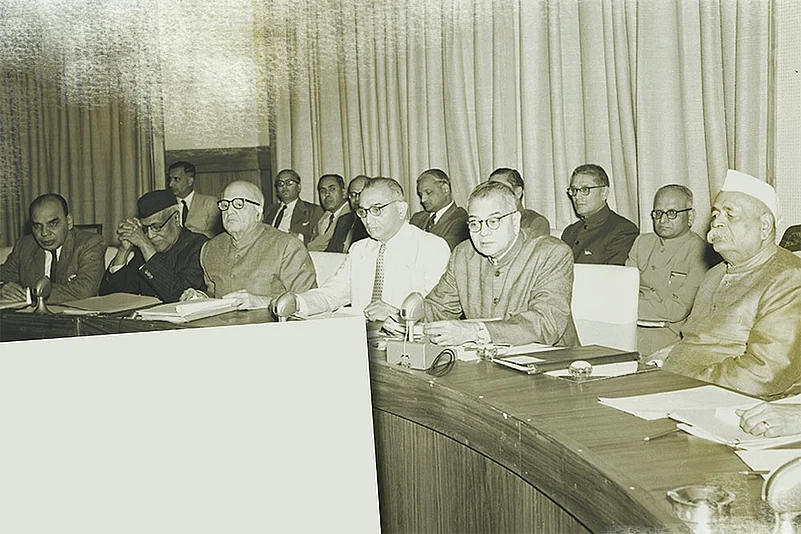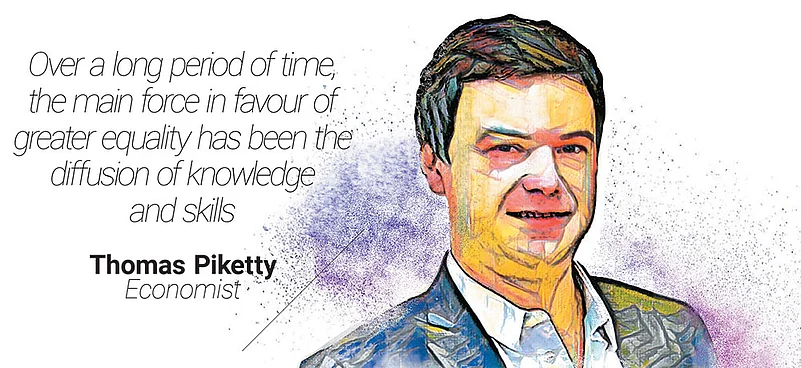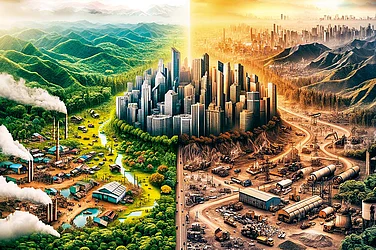
Rich India, Poor Indians
Right from the days of the first planning commission to the present-day Niti Aayog, policymakers have pushed for India to industrialise. However, somewhere on the way, India forgot to put its people in focus. Despite the progress the country has made since the independence, its per-capita income is low. There is a raging inequality debate in a high-growth India. Can India increase the income of its people alongside its national income?
***
The first-generation tech entrepreneur story in India is perhaps just a few decades old. Somewhere around the turn of the millennium, we saw more people increasingly move away from the “Engineering + MBA = Banking Job” formula to strike out on their own.
Such assertions abound, and since they are serious assertions, they need to be carefully examined. From the point of view of development and deprivation, inequality and poverty are related. But, inequality is relative, while poverty is absolute. This column is only about inequality, and not poverty.
There are three different propositions about inequality which should be distinguished from each other: (1) there is inequality in India; (2) inequality increased pre-Covid; and, (3) Covid-19 has accentuated inequality. Empirically, as well as theoretically, growth often results in an increase in inequality, at least until a certain level of per capita income is attained, and India is still far away from reaching that threshold. No one can deny that growth in India has slowed. It slowed before Covid-19, and Covid-19 and subsequent geopolitical uncertainty have compounded the slowing process. If that is the case, how could inequality have been increased? That does not sound logical. Before making a case like this, one should explain what one means, explain what one is measuring and explain the source of data.
Inequality can be interpreted as inequity in access to inputs, which can be physical and social infrastructure, financial products, access to markets, technology and information. Since May 2014, the government’s inclusion attempt has been to extend these inputs to deprived sections and geographical areas. That is spliced with targeted subsidies.
Have these measures led to an improvement in access? The indices on the provision of basic necessities, aspirational districts programme, dashboards, third-party audits and surveys like the National Family Health Survey 2019–21 show that there has been an improvement. Indeed, if inequality is viewed with a rural-urban lens, by any indicator, inequality between rural and urban areas has declined. This is also true of propositions based on gender or religion.
Data will not substantiate a case of increasing inequality, not even for the digital divide. That is the reason one should differentiate between Argument 1 and Argument 2. Indeed, had it not been for this, arguably, India would have suffered much more because of the epidemic. Covid-19, the lockdown and a slowdown in economic activity affected everyone. An exogenous shock tends to move people below the poverty line. For India, is there any evidence of this having led to a differential impact across different sections of society? Not really, and that evidence is required to establish Argument 3.
Sometimes, by inequality, we mean inequality in its spatial or geographical dimension, such as inequality among the states. The issue of divergence versus convergence among the states has been researched and debated. The answer depends on the metric one uses to measure inequality. According to some variables, there has been convergence. According to others, there has been divergence. But, since growth has slowed, divergence, where it exists, would also have been muted.
In its spatial sense, there is a normative point one should remember. More and more villages are increasingly being mainstreamed. It is as if the radius of development increases and the periphery becomes smaller. This reduces the economic distance between a village with a population size of 5,000 and a town/city, but it increases the economic distance between a village with a population size of 5,000 and one with a population size of 500. The former leads to a decrease in inequality, while the latter leads to an increase in it. Is this increase in inequality, resulting from development spreading, undesirable? That is the reason I spoke of a correlation between urbanisation and economic development and inequality.
Most of the time when people speak of inequality, they mean inequality in personal distribution of income or consumption expenditure. Such an aggregate measure of inequality is the Gini index. The lower the value of Gini—the value ranges between 0 and 1—the lower is inequality. In India, we do not have satisfactory data on distribution of income. Therefore, any assertion about the Gini which is based on the distribution of incomes should be taken with a pinch of salt. How did inequality estimates get data on income distributions? Are assumptions used in methodology robust? Is Indian data on pre-tax incomes being compared to Western data on post-tax incomes?

We do have data on distribution of consumption expenditure in India, and, typically, a Gini based on consumption distributions will have a lower value than that based on income distributions. This data is obtained through the consumption expenditure surveys of the National Sample Survey (NSS). The last such NSS survey was conducted for 2011–12, earlier ones being done for 2004–05 and 2009–10.
Between 2004–05 and 2011–12, and between 2009–10 and 2011–12, Gini coefficients did increase, particularly for urban India. (There were question marks about the 2009–10 data, which is why it is not often used.) Since data does not exist for after 2011–12—and one can legitimately complain about it—is an old assertion about an increase being mechanically applied today? In the absence of the NSS consumption expenditure surveys, one can use the periodic labour force survey data to form an idea about what has happened to personal distributions of income. If one uses data for 2020–21, measured by Gini and both for rural and urban India, there is a slight decrease in the Gini coefficient compared to 2011–12. In other words, this kind of inequality has not increased.
So, why is there a sense that inequality has increased in India? This is because of a different dimension of inequality, which is the sectoral distribution between capital and labour. This is a global problem. In India’s case, it has to do with micro, small and medium enterprises and unorganised sectors suffering in relative terms, compounded by a stagnation in urban employment, especially at the lower end of the skills spectrum. In measuring this, it is important to differentiate between concentration in wealth and inequality in income/consumption distributions. Wealth is a stock, while income is a flow, and wealth, particularly when computed on the basis of stock market or real estate valuations, can be misleading. This kind of inequality is the real policy conundrum, not the personal distribution or the spatial one. In part, the solution lies in growth and a revival of the labour market.
I repeat, growth does lead to an increase in inequality, and, if it is not excessive, one should not worry much. There is no evidence that the Gini coefficient is unduly high in India. Some years ago, a volume of essays was published in honour of former chairman of the erstwhile Planning Commission Montek Singh Ahluwalia. Late Suresh Tendulkar, the doyen of poverty and inequality studies in India, wrote an anecdote in it. This was about a conference in Bangkok when Manmohan Singh was the deputy chairman of the Planning Commission. “After other delegations presented their experiences in managing a market economy, the Chinese vice-minister presented an outline of the Chinese reform programme. At the end of the presentation, Singh, in his usual gentle but forceful tone, asked, ‘Would not what you are trying to do result in greater inequality in China?’ To that, the minister replied, with great conviction, ‘We would certainly hope so!’”
That sums it up neatly. We should worry about inclusion and inequity in access to inputs. That is what the government has been attempting since 2014. Growth and empowerment will ensure reduction in poverty and generation of employment since perceptions about inequality are usually dynamic: if a person’s situation improves in absolute terms, they worry less about the relative aspect of inequality.
Bibek Debroy, Chairman, Economic Advisory Council to the Prime Minister


























